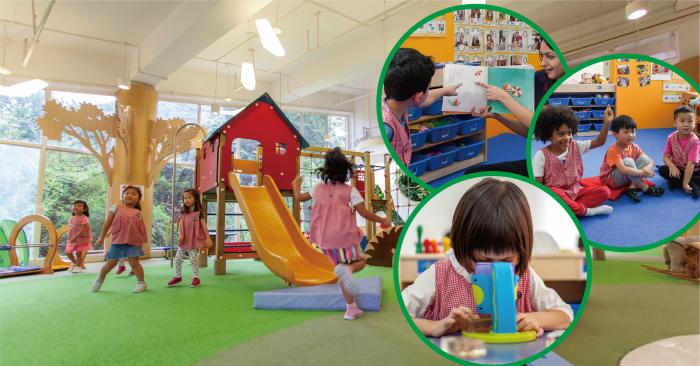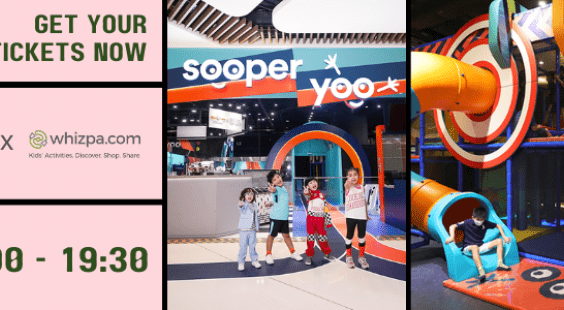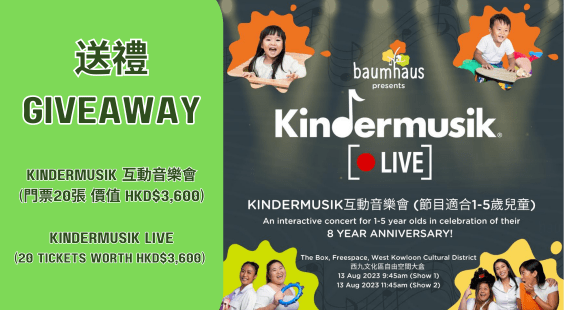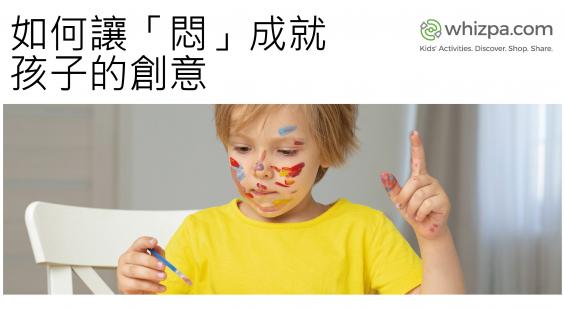
WHAT TO CONSIDER WHEN CHOOSING A KINDERGARTEN IN HONG KONG
Kindergarten is a child’s introduction to formal schooling, and is quite a big step forward in their overall development. While getting a pre-school education is not mandatory in Hong Kong, most parents enroll their children in school at this stage to give them the opportunity to develop their social, emotional, language, and problem-solving skills.
Hong Kong kindergartens cater to children aged 3-6 years old, and there are many schools in the city to choose from, depending on what you feel works best for your family – from the curriculum the school offers and its teacher-to-student ratio, to the facilities it provides children and the differing admissions processes. Read our guide to understand which factors you should consider when selecting a kindergarten for your child.
1. Curriculum
This is often the first criterion that many parents look at because it impacts which schools their child will be accepted into in the future. A well-rounded curriculum helps children develop self-esteem, teaches them cooperation, and sparks their curiosity. If you know where your child will pursue their further education, you can select a curriculum that supports this choice.
The most common curriculum is the one offered by Hong Kong public or “local” schools that charge minimal fees, but tend to have a more structured curriculum, with a focus on preparing children for primary school. There are also the more child-centric set-ups, such as Montessori or Reggio Emilia, which encourage learning through play and hands-on activities.
Parents who favour a combination of play-based and teacher-led learning can opt for the UK-based Early Years Foundation Stage, while those who want their child to enter an International Baccalaureate (IB) school can consider any of the English Schools Foundation’s five kindergartens that are authorised to offer the Primary Years Programme (PYP).
Then there’s the International Early Years Curriculum, which emphasises learning through holistic enquiry and play-based approaches that cover personal, social and emotional development, and Forest Schools that use nature, plants, and animals to teach more abstract topics like math and communications and heavily focus on teamwork and problem-solving.
Other systems include the Nordic-based programme and the German International Stream, as well as the American curriculum and UK National Curriculum, which are incorporated into several curricula in international schools in Hong Kong.
2. Facilities
When selecting a kindergarten, it’s also important to see whether it has a space that is responsive to the needs of students and allows educators to be flexible. Facilities like a library, for instance, will help instill a love for reading in your child and improve their language and vocabulary, while an outdoor play area can aid their physical and social development.
Kindergartens that have open-plan classrooms favour giving their students a sense of freedom while learning. Spaces dedicated to nature and creativity can help children of this age discover and develop new areas of interest.
3. Language of instruction
The medium of instruction in local schools is Cantonese, though there are some that offer bilingual options, in which children will learn Chinese and English. Trilingual schools give students the opportunity to learn English, Cantonese and Mandarin. There are also several international kindergartens across the city that teach children French, German, Spanish, Japanese and Korean, among other languages.
4. Location and accessibility
Many parents prefer to send their children to neighbourhood kindergartens, especially when they’re just starting school, but you could send your child further afield, depending on your transport options. Some schools offer bus services from designated pick-up points, while others may be a short MTR or car ride away.
If getting to a school you favour involves a long commute, consider how early your child will have to wake up and whether the trip itself will tire them out. Remember to pick a school that is easy to get to in most weather conditions, considering that Hong Kong can get unpredictably hot, cold, or rainy, depending on the season.
5. Length of school day
Most kindergartens in the city provide half-day or whole-day classes. If parents enroll their children for half-day classes, they’re given the option of morning (AM) or afternoon (PM) sessions.
Whole-day classes can be beneficial for working parents who may not have after-school childcare options. Some parents even prefer that their children attend a full day of school so that they can be prepared for longer days when they enter primary school.
6. Reputation and accreditation
All schools in Hong Kong must be registered with the Permanent Secretary for Education so they can receive a Certificate of Registration of School. If you wish to admit your child to an international school, look at whether it has accreditation from the Council of International Schools. This database only consists of a list of international primary and secondary schools, but you can check if these schools have kindergartens.
7. Admissions process
It is recommended that parents start looking at potential kindergartens at least 18 months before their child is ready to attend school. This is because the admissions process in Hong Kong often begins a year prior to when your child is expected to start school.
Local and ESF schools, for instance, only accept applications in September for the following academic year, and may take later enrollments only if their quota isn’t full. However, as Hong Kong is home to a large international community, there are schools that have later intakes or accept children on a rolling admissions basis.
In addition, some kindergartens may invite your child for an interview, which is typically play-based and assesses your child’s problem-solving and social skills. Speak to other parents, especially those with children a year older than yours, to get an idea of what an interview involves and what skills your preferred school expects potential students to have.
8. Parental involvement
Children whose parents are involved in school tend to demonstrate better social skills and better adapt to school life. Parents who take part in school-related work and activities can help their children foster a lifelong love of learning and give them a sense of security.
Have a look at the school’s calendar and see how many parent-child activities they schedule through the year. Ask whether the school sends assignments home that you and your child need to work on together, such as weekend or vacation projects. Schools can also send parents pictures and videos of their child at school and encourage them to talk about what they did throughout the day.
9. Teacher-to-student ratio and teacher qualifications
In Hong Kong, no more than 30 children are permitted to be in a single kindergarten class, though they are allowed to have more than 10 total classes. It’s also important to look at teacher-to-student ratios, as young children benefit from personal attention. A low teacher-to-student ratio, such as 1:10, can help teachers devote more time to each child and assess whether any of them needs extra care.
Different curricula require differing teacher qualifications. For instance, the minimum academic entry qualification for public schools is five passes in the Hong Kong Certificate of Education Examination or Hong Kong Diploma of Secondary Education Examination, in both English and Chinese. A Montessori teacher, on the other hand, should have a bachelor’s degree in education, early childhood education, or a related field, in addition to a teaching licence and training certificate from an accredited Montessori school.
10. Extracurricular activities
Extracurricular activities help young children build social skills such as leadership, coordination, cooperation, and communication. They also help children discover latent interests and teachers identify hidden talents in students.
There are several centres in Hong Kong that offer after-school activities, but many parents prefer to send their children to classes in their own kindergartens. The most popular picks are STEM and sports activities, as well as dance and yoga.








